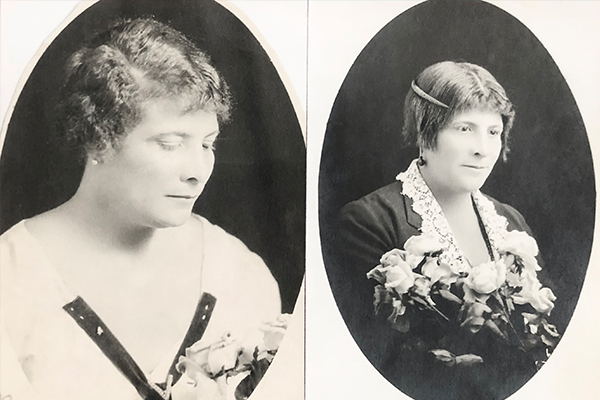Tonight’s performance of Penelope has been cancelled (Thursday, April 18 at 8PM). If you had tickets to tonight’s performance, the Box Office will be reaching out with options for your tickets.
On Passing
by Dr. Yaba Blay
Generally speaking, “passing” occurs when someone of one group – be it racial, ethnic, or religious – presents themselves as a member of another group. More specifically, in the case of Gun & Powder’s main characters, Mary and Martha Clarke, “passing for White” means that a person who is “technically” Black presents themselves as and lives their lives as White.
Why would anyone do that? Given the history of race and oppression in the United States, the answer should be obvious – passing affords people the opportunity to benefit from the social (if not legal) benefits that Whiteness affords. If you look White, and are received as White, you are White, and will be treated accordingly. Alternatively, if you look Black, and are received as Black, you are Black, and will be treated accordingly. Passing allowed people the “opportunity” to “escape Blackness” and the oppression assigned to Blackness. There would be no need for passing if we were truly “all created equal” and treated as such.

Mary and Martha Clarke
Within this context, the prototypical and phenotypical features of African ancestry – dark skin, broad nose, tightly coiled hair – were the undeniable markers of inferiority. These features served to immediately communicate one’s position within the social power structure; and in the context of enslavement, whether one was free or enslaved. However, this seemingly simple social order soon became complicated by the rampant increase in racial mixing, and consequently, a person’s race was no longer readily recognizable upon first sight. The lines between White and Black, free and enslaved, became more and more blurred. The “one-drop rule”1 thus became pivotal in the South’s defense of enslavement, as it helped to demonstrate clear boundaries between enslavement and freedom – if you were White, you were free; if you were Black, you were enslaved. Period. One did not have to look Black, in order to be Black. In order to maintain the color line, and thus the superiority of the White race and the concentration of White power, Whiteness had to remain “pure” and the lines between who counted as White and who didn’t had to be unquestionably clear – visibly so.
Rather than to suffer as Black, many instead chose to “become White” by “passing” into White society in order to gain social, economic and other opportunities. No easy decision, passing involved taking many risks including arousing suspicion, being “discovered,” being forced to return to Blackness, or worse – death. Successful, “continuous passing” required that the person who passed for White sever all family ties and connections to the Black community, and their success often relied on their family’s cooperation in protecting their new identity. A cinematic example of this can be found in the 1934 film Imitation of Life (based on the 1933 book of the same name by Fannie Hurst). In one of the film’s most powerful scenes we see the main character, Peola, the light-skinned daughter of a dark-skinned Black woman named Delilah, working behind a sales counter. She has been living far away from home and has been passing as White. Delilah, who has been searching for Peola, sees her daughter through the storefront window, enters the establishment, and attempts to talk to her. Given the time of segregation, Delilah should not have been there. Flustered, Peola pretends to not know her own mother. When the manager comes to see what’s going on, Peola heartbreakingly proclaims “This woman doesn’t know what she’s talking about! Do I look like her daughter? Do I look like I could be her daughter? Why she must be crazy!”
Those unable to completely abandon their families and identities often practiced part-time passing. This form of passing usually involved passing only under specific circumstances, or for certain occasions. For example, a person might pass in order to work in a “Whites only” establishment, for example, thus earning wages that they might not have had access to had they lived or worked as Black. Often times, this form of passing was done not only for the benefit of the individual, but for the benefit of their Black families as well. In Gun & Powder, Mary and Martha intended to pass so that they could help their mother settle her sharecropping debt. But as the story unfolds, we see that their decision to pass would not turn out to be as “black and white” as they may have thought.
NOTE
1. The “one drop rule” is the uniquely American premise that all it takes is one single solitary “drop” of Black blood to racially render a person Black. Said differently, the one-drop rule holds that a person with any trace of Black ancestry, however small or (in)visible, cannot be considered White – they must be considered Black. A method of social order that began almost immediately after the arrival of enslaved Africans to America, the one-drop rule became a legal reality in the State of Virginia in 1705, and by 1910, it was the law of the land in almost all Southern U.S. states. The United States Supreme Court sanctioned the one-drop rule and by 1925, almost every state had some form of a one-drop law on the books. The message was clear – no matter how white you may appear, if there is but one-drop of Black blood in your lineage, you will be considered Black and treated accordingly.

Dr. Yaba Blay is a scholar-activist, cultural producer and consultant. She is the author of (1)ne Drop: Shifting the Lens on Race.
ADDITIONAL READING
· (1)ne Drop: Shifting the Lens on Race by Yaba Blay
· A Chosen Exile : A History of Racial Passing in American Life by Allyson Hobbs
· Race – The Power of An Illusion https://www.pbs.org/race/000_General/000_00-Home.htm